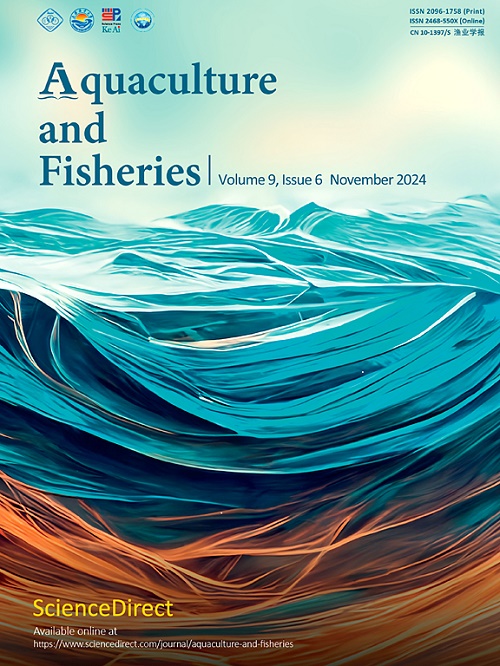Valorization of pulp and viscera from hybrid sorubim and pacu by production of protein concentrate using alkaline solubilization
Q1 Agricultural and Biological Sciences
引用次数: 0
Abstract
Fish protein concentration (FPC) by alkaline solubilization has proven to be an alternative method in adding value to muscle-based materials. The aim of this work was to evaluate the influence of different processes (decanting/sieving or centrifugation), reagents (sodium bicarbonate or sodium hydroxide) and washing cycles (1–4) on the quality of protein concentrates obtained from mechanically separated meat (MSM) and viscera of hybrid sorubim (Pseudoplatystoma reticulatum × P. corruscans) and pacu (Piaractus mesopotamicus) fishes. The protein concentrate was obtained by washing the viscera or MSM during up to four cycles (4:1 solution:meat ratio). In each cycle, the liquid waste and fat were removed by decanting/sieving or centrifugation. Moisture, crude protein, crude fat and crude ash contents were determined after each washing cycle. The moisture and protein contents increased immediately after the first washing up to 77.88% (dry basis). The lipid content decreased with the cycles down to 2.99% (dry basis). Higher FPC yield was obtained for MSM during the centrifugation process compared to the decantation/sieving process. Two weight yields above 100% were found in procedures with NaHCO3 and MSM of hybrid sorubim and pacu, probably due to the larger capacity of gel formation during protein concentration. Differences related to the fish species were more evident than the processes and utilized reagents.
利用碱溶解法生产浓缩蛋白,实现杂交山榄和猕猴桃果肉和内脏的价值化
鱼蛋白浓度(FPC)的碱性增溶已被证明是一种增加价值的肌肉基材料的替代方法。本研究的目的是评估不同工艺(脱液/筛分或离心)、试剂(碳酸氢钠或氢氧化钠)和洗涤周期(1-4)对机械分离的肉(MSM)和杂交sorubim (Pseudoplatystoma reticulatum × P. corruscans)和pacu (Piaractus mesopotamicus)鱼的内脏所获得的蛋白质浓缩物质量的影响。浓缩蛋白是通过洗涤内脏或MSM在多达四个周期(4:1溶液:肉比)获得的。在每个循环中,通过滗析/筛分或离心除去废液和脂肪。每个洗涤循环后测定水分、粗蛋白质、粗脂肪和粗灰分含量。第一次洗涤后,水分和蛋白质含量立即增加,达到77.88%(干基)。随着循环次数的增加,油脂含量逐渐降低,为2.99%(干基)。与滗析/筛分工艺相比,离心工艺获得了更高的FPC收率。在NaHCO3和MSM混合的sorubim和pacu过程中发现两个重量产率超过100%,可能是由于在蛋白质浓缩过程中形成凝胶的能力更大。不同鱼种之间的差异比不同工艺和所用试剂之间的差异更明显。
本文章由计算机程序翻译,如有差异,请以英文原文为准。
求助全文
约1分钟内获得全文
求助全文
来源期刊

Aquaculture and Fisheries
Agricultural and Biological Sciences-Aquatic Science
CiteScore
7.50
自引率
0.00%
发文量
54
审稿时长
48 days
期刊介绍:
 求助内容:
求助内容: 应助结果提醒方式:
应助结果提醒方式:


